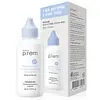What's inside
What's inside
 Key Ingredients
Key Ingredients

 Benefits
Benefits

 Concerns
Concerns

No concerns
 Ingredients Side-by-side
Ingredients Side-by-side

Water
Skin ConditioningButylene Glycol
HumectantPropolis Extract
Skin ConditioningPropanediol
Solvent1,2-Hexanediol
Skin ConditioningPentylene Glycol
Skin ConditioningHyaluronic Acid
HumectantSodium Hyaluronate
HumectantHydrolyzed Hyaluronic Acid
HumectantBetaine
HumectantGlycerin
HumectantMethylpropanediol
SolventPolyacrylate Crosspolymer-6
Emulsion StabilisingXanthan Gum
EmulsifyingEthylhexylglycerin
Skin ConditioningAllantoin
Skin ConditioningAnthemis Nobilis Flower Extract
MaskingPhenoxyethanol
PreservativeDisodium EDTA
Sodium Citrate
BufferingCitric Acid
BufferingCaffeine
Skin ConditioningTocopherol
AntioxidantWater, Butylene Glycol, Propolis Extract, Propanediol, 1,2-Hexanediol, Pentylene Glycol, Hyaluronic Acid, Sodium Hyaluronate, Hydrolyzed Hyaluronic Acid, Betaine, Glycerin, Methylpropanediol, Polyacrylate Crosspolymer-6, Xanthan Gum, Ethylhexylglycerin, Allantoin, Anthemis Nobilis Flower Extract, Phenoxyethanol, Disodium EDTA, Sodium Citrate, Citric Acid, Caffeine, Tocopherol
Water
Skin ConditioningGlycerin
HumectantButylene Glycol
HumectantEthylhexyl Palmitate
EmollientCetyl Ethylhexanoate
Emollient1,2-Hexanediol
Skin ConditioningSorbitol
HumectantPanthenol
Skin ConditioningPolyglyceryl-10 Oleate
Skin ConditioningCeramide NP
Skin ConditioningMadecassoside
AntioxidantAnthemis Nobilis Flower Extract
MaskingCarbomer
Emulsion StabilisingHydrogenated Lecithin
EmulsifyingTromethamine
BufferingDipropylene Glycol
HumectantEthylhexylglycerin
Skin ConditioningCetearyl Olivate
Disodium EDTA
Sorbitan Olivate
EmulsifyingCaprylic/Capric Triglyceride
MaskingWater, Glycerin, Butylene Glycol, Ethylhexyl Palmitate, Cetyl Ethylhexanoate, 1,2-Hexanediol, Sorbitol, Panthenol, Polyglyceryl-10 Oleate, Ceramide NP, Madecassoside, Anthemis Nobilis Flower Extract, Carbomer, Hydrogenated Lecithin, Tromethamine, Dipropylene Glycol, Ethylhexylglycerin, Cetearyl Olivate, Disodium EDTA, Sorbitan Olivate, Caprylic/Capric Triglyceride
Ingredients Explained
These ingredients are found in both products.
Ingredients higher up in an ingredient list are typically present in a larger amount.
1,2-Hexanediol is a synthetic liquid and another multi-functional powerhouse.
It is a:
- Humectant, drawing moisture into the skin
- Emollient, helping to soften skin
- Solvent, dispersing and stabilizing formulas
- Preservative booster, enhancing the antimicrobial activity of other preservatives
Anthemis Nobilis Flower Extract is from the Roman Chamomile flower. It helps soothe the skin and contains antioxidants.
Butylene Glycol (or BG) is used within cosmetic products for a few different reasons:
Overall, Butylene Glycol is a safe and well-rounded ingredient that works well with other ingredients.
Though this ingredient works well with most skin types, some people with sensitive skin may experience a reaction such as allergic rashes, closed comedones, or itchiness.
Learn more about Butylene GlycolDisodium EDTA plays a role in making products more stable by aiding other preservatives.
It is a chelating agent, meaning it neutralizes metal ions that may be found in a product.
Disodium EDTA is a salt of edetic acid and is found to be safe in cosmetic ingredients.
Learn more about Disodium EDTAEthylhexylglycerin (we can't pronounce this either) is commonly used as a preservative and skin softener. It is derived from glyceryl.
You might see Ethylhexylglycerin often paired with other preservatives such as phenoxyethanol. Ethylhexylglycerin has been found to increase the effectiveness of these other preservatives.
Glycerin is already naturally found in your skin. It helps moisturize and protect your skin.
A study from 2016 found glycerin to be more effective as a humectant than AHAs and hyaluronic acid.
As a humectant, it helps the skin stay hydrated by pulling moisture to your skin. The low molecular weight of glycerin allows it to pull moisture into the deeper layers of your skin.
Hydrated skin improves your skin barrier; Your skin barrier helps protect against irritants and bacteria.
Glycerin has also been found to have antimicrobial and antiviral properties. Due to these properties, glycerin is often used in wound and burn treatments.
In cosmetics, glycerin is usually derived from plants such as soybean or palm. However, it can also be sourced from animals, such as tallow or animal fat.
This ingredient is organic, colorless, odorless, and non-toxic.
Glycerin is the name for this ingredient in American English. British English uses Glycerol/Glycerine.
Learn more about GlycerinWater. It's the most common cosmetic ingredient of all. You'll usually see it at the top of ingredient lists, meaning that it makes up the largest part of the product.
So why is it so popular? Water most often acts as a solvent - this means that it helps dissolve other ingredients into the formulation.
You'll also recognize water as that liquid we all need to stay alive. If you see this, drink a glass of water. Stay hydrated!
Learn more about Water